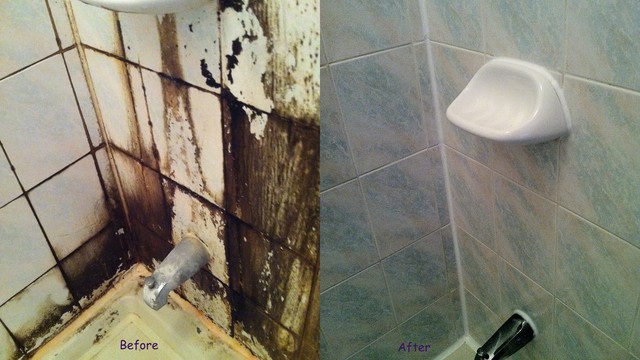Black mould, also known as Stachybotrys chartarum, is a type of fungus that can grow on various surfaces in your home, including the shower wall. When you notice black mould on your shower wall, it can be a cause for concern as it can pose a serious threat to your health and home. In this post, we will explore why it is bad to have black mould on the shower wall and what you can do to prevent and remove it.
Why is Black Mould Dangerous?
Black mould is dangerous because it produces mycotoxins, which can cause a range of health problems. When inhaled, mycotoxins can cause respiratory problems such as asthma, coughing, and wheezing. They can also cause skin and eye irritation, headaches, and fatigue.
Furthermore, black mould can worsen existing health conditions. Individuals with allergies, asthma, and weakened immune systems are particularly susceptible to the negative effects of black mould. For example, if a person with asthma inhales the spores of black mould, it can cause an asthma attack or make their symptoms worse.
Black mould can also cause structural damage to your home. When black mould grows on shower walls, it can weaken the walls and cause them to crumble or rot. This can lead to expensive repairs, particularly if the mould is left untreated for an extended period.
What Causes Black Mould to Grow on Shower Walls?
Black mould grows in damp and warm conditions. A shower provides the perfect environment for black mould to thrive because it is often warm, moist, and poorly ventilated. When you shower, the moisture from the steam and water gets absorbed into the walls, creating a damp environment that encourages mould growth.
Another common cause of black mould growth on shower walls is a leaking showerhead or faucet. When water leaks out, it creates a damp environment that is conducive to mould growth. Over time, the mould can spread and damage the walls and other areas of the bathroom.
How to Prevent Black Mould from Growing on Shower Walls?
The best way to prevent black mould from growing on your shower walls is to keep your bathroom dry and well-ventilated. Here are some tips to help you prevent black mould growth:
Use a shower curtain: A shower curtain can help keep water from splashing outside the shower and onto the walls. Make sure to clean the shower curtain regularly to prevent mould growth.
Turn on the exhaust fan: Turn on the exhaust fan when you shower to help remove excess moisture from the air. If you do not have an exhaust fan, consider installing one.
Wipe down the shower walls: After showering, use a squeegee or towel to wipe down the shower walls to remove any excess moisture.
Fix any leaks: If you notice any leaks in your shower, fix them as soon as possible to prevent water from seeping into the walls and creating a damp environment.
Use a mould-resistant paint: If you are remodeling your bathroom or repainting the walls, use a mould-resistant paint to help prevent black mould growth.
How to Remove Black Mould from Shower Walls?
If you notice black mould on your shower walls, it is important to remove it as soon as possible to prevent it from spreading and causing health problems. Here are some steps to follow when removing black mould from your shower walls:
Wear protective gear: Before you start cleaning, put on gloves, a mask, and eye protection to avoid inhaling mould spores.
Prepare a cleaning solution: Mix a solution of bleach and water in a ratio of 1:10 (one part bleach to ten parts water) or use a commercial mould remover. Make sure to follow the instructions on the product carefully.
Apply the cleaning solution: Use a sponge

